Light night, dark stars
Light pollution causes problems for astronomers, migrating animals, and stargazers.
In early October, thousands of people around the globe stepped outside to gaze at their local night sky. As part of an event called the Great World Wide Star Count, adults and kids looked for one of two constellations—Cygnus in the Northern Hemisphere and Sagittarius in the Southern Hemisphere. The observers recorded how many stars they saw and how bright the stars were, and then posted their results online.
The Star Count was part of a global effort to help scientists learn more about how light pollution affects our view of the night sky. Whether participants saw thousands of stars—or just a dozen—depended a lot on whether they were surrounded by darkness or by twinkling city lights.
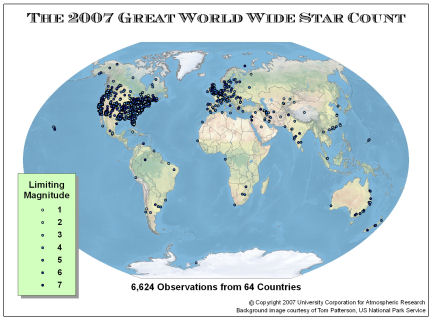 |
|
Dark spots on the map, above, show the locations of people who participated in the first annual Great Worldwide Star Count. Over 2 weeks, people in 64 countries made 6,624 observations. |
| UCAR |
On a clear night, with no clouds, moonlight, or artificial lights to block the view, people can see more than 14,000 stars in the sky, says Dennis Ward, an astronomer with the University Corporation for Atmospheric Research (UCAR) in Boulder, Colo. He helped coordinate the Star Count. But when people are surrounded by city lights, he says, they’re lucky to see 150 stars.
If you’ve ever driven toward a big city at night and seen its glow from afar, you’ve witnessed light pollution. It occurs when light from streetlights, office buildings, signs, and other sources streams into space and illuminates the night sky. This haze of light makes many stars invisible to people on Earth.
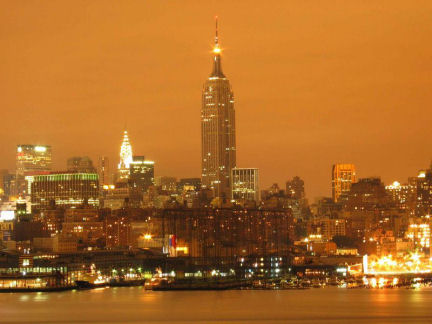 |
|
Even at night, big cities like New York (shown above) glow from light pollution, making stargazing difficult. |
| Charliebrown7034/Wikipedia |
Dust and particles of pollution from factories and industries worsen the effects of light pollution. When these particles float into the atmosphere, light ricochets off of them and scatters even more.
“If one city has a lot more airborne pollution than another,” Ward says, “that city will suffer the effects of light pollution on a much greater scale.”
The problem with light
Light pollution doesn’t just put a damper on amateur stargazing. Hazy skies also make it far more difficult for astronomers to do their jobs. Some of the earliest telescopes and observatories were placed as far away from civilization as possible so that astronomers could observe the faintest galaxies without interference by city lights.
But cities are getting larger. Suburbs are growing in once dark, rural areas. Light from all this new development is increasingly obscuring the faint light given off by distant stars and galaxies. And if scientists can’t locate these objects, they can’t learn more about them.
“To get all the way out of the atmosphere and away from light pollution,” Ward says, instruments such as the Hubble Space Telescope are placed in orbit. Still, a lot of astronomical viewing takes place from Earth, where light pollution remains a problem.
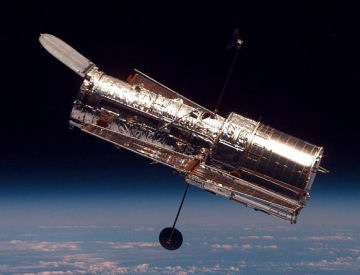 |
|
In orbit, telescopes can view the stars without interference from artificial lights on Earth. This image of the Hubble Space Telescope was taken by the Space Shuttle Discovery. |
| NASA |
Light pollution doesn’t only affect star visibility. It can harm wildlife too.
Scientists don’t entirely understand how animals navigate at night, but it’s clear that artificial light can attract them, making them go off course. There’s increasing evidence, for example, that migrating birds use sunsets and sunrises to help find their way, says Sydney Gauthreaux Jr., a biologist at Clemson University in South Carolina.
“When light occurs at night,” he says, “it has a very disruptive influence.”
Sometimes birds fly into lighted towers, high-rises, floodlit smokestacks, and cables from radio and television towers. Experts estimate that millions of birds die this way every year.
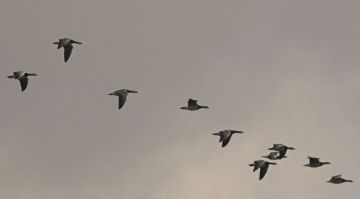 |
|
As the sun sets in Finland, Barnacle geese fly south on their annual autumn migration. Bright city lights can distract and harm traveling birds. |
| Thermos/Wikipedia |
Sea turtle hatchlings also depend on moonlight and starlight to guide them into the water. Artificial lights can disorient these animals. They often end up heading toward lit-up parking lots, beach houses, and hotels by mistake.
Some night lights are necessary, of course. But the International Dark-Sky Association, an organization based in Tucson, estimates that 30 percent of artificial nighttime lighting is wasted.
It estimates that Americans alone spend $10.4 billion every year on wasted lighting. Lights are left on when no one is using them. In other cases, lights are angled upward without proper shielding. Unnecessary lighting also uses excess energy and contributes to global warming.
Lights out
In response to the growing light pollution problem, a number of cities are now running light pollution awareness campaigns. Among these cities is San Francisco, which held its first “Lights Out San Francisco” event on October 20, 2007. That night, the city encouraged people to turn off all nonessential lights for an hour.
Sydney, Australia, and Toronto, Canada, have held similar events. And in March 2008, a program called “Lights Out America” will invite all U.S. residents to turn off all nonessential lights for an hour.
To learn more about light pollution’s effect on the night sky, anyone, anywhere on the planet can participate in activities described on the Web site of the Great World Wide Star Count. There, people can compare the results of their stargazing with what others found during the official event.
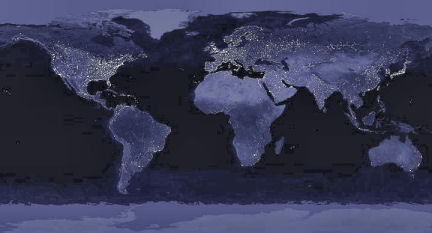 |
|
Made from many images put together, this composite shows Earth’s city lights from above. The biggest cities appear brightest. |
| NASA/NOAA |
With guidance from the site, teachers and students can collect data on their local skies and map light pollution in their cities and communities. The UCAR team will use data collected during the official event to compile global maps of light pollution. The researchers also plan to hold an official Star Count annually to study how light pollution changes from year to year.
The good news, Ward says, is that we don’t have to live with all this light pollution.
“There are lots of things people can do to still use the lighting they need,” he says, but they need “to do it more wisely and with less waste.”
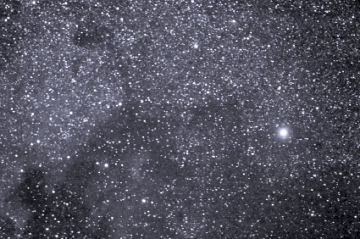 |
|
On a clear night in a dark place, you can see thousands of stars. This image shows the sky in the direction of the constellation Cygnus. |
| iStockphoto.com |
One easy way to make your local sky darker is to close the blinds in your house at night to prevent internal lights from shining outside. You can also turn off lights that aren’t in use. Encourage your parents and schools to use motion-sensor lights that turn on only when needed, to buy energy-efficient light bulbs, and to buy outdoor lights with shielding that prevents them from shining skyward.
Then step outside, and enjoy the view!
Going Deeper:







